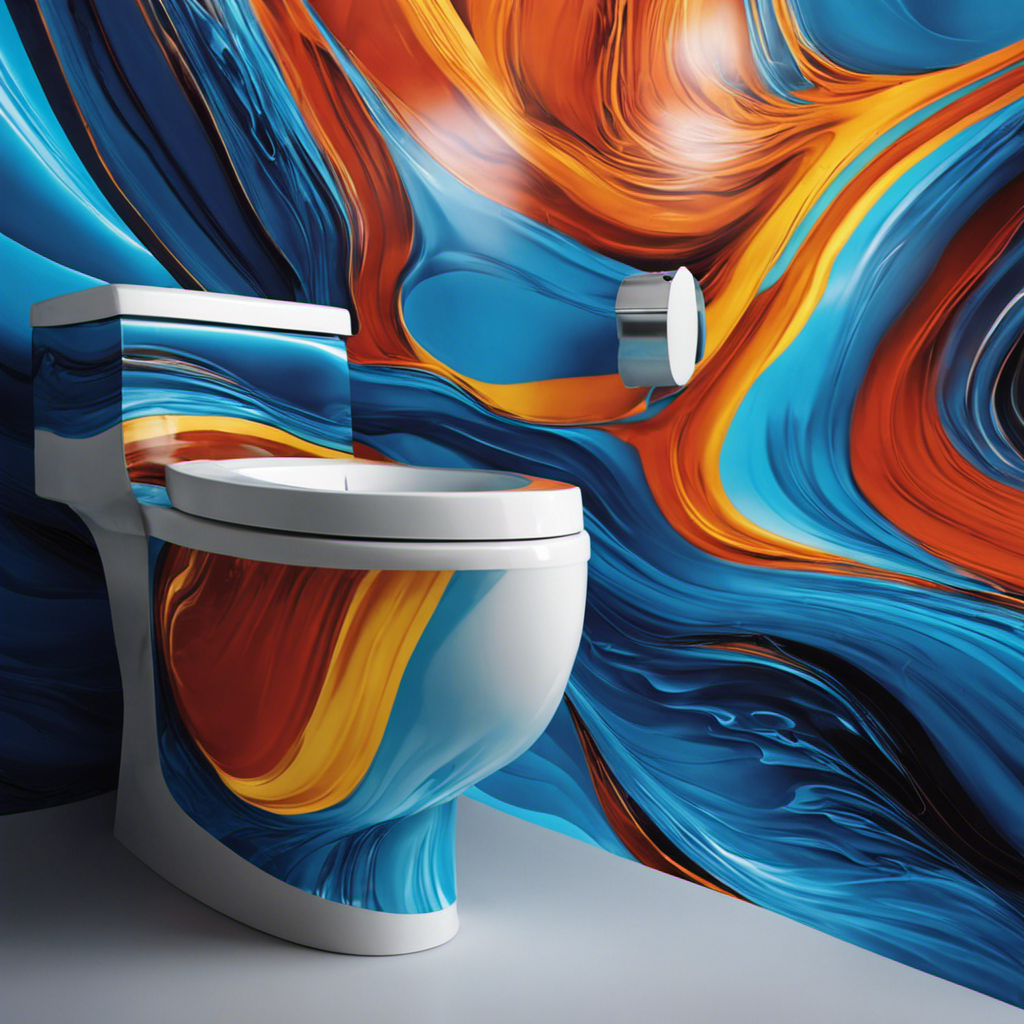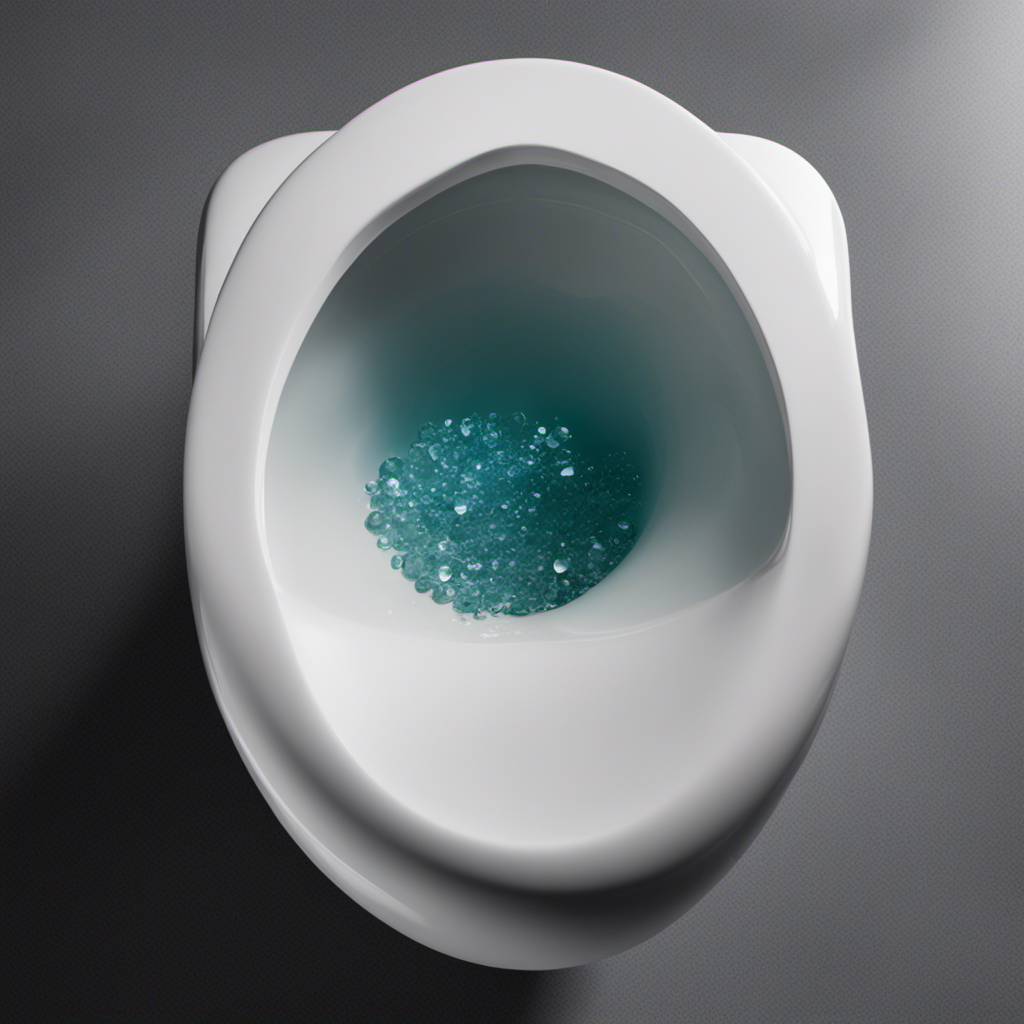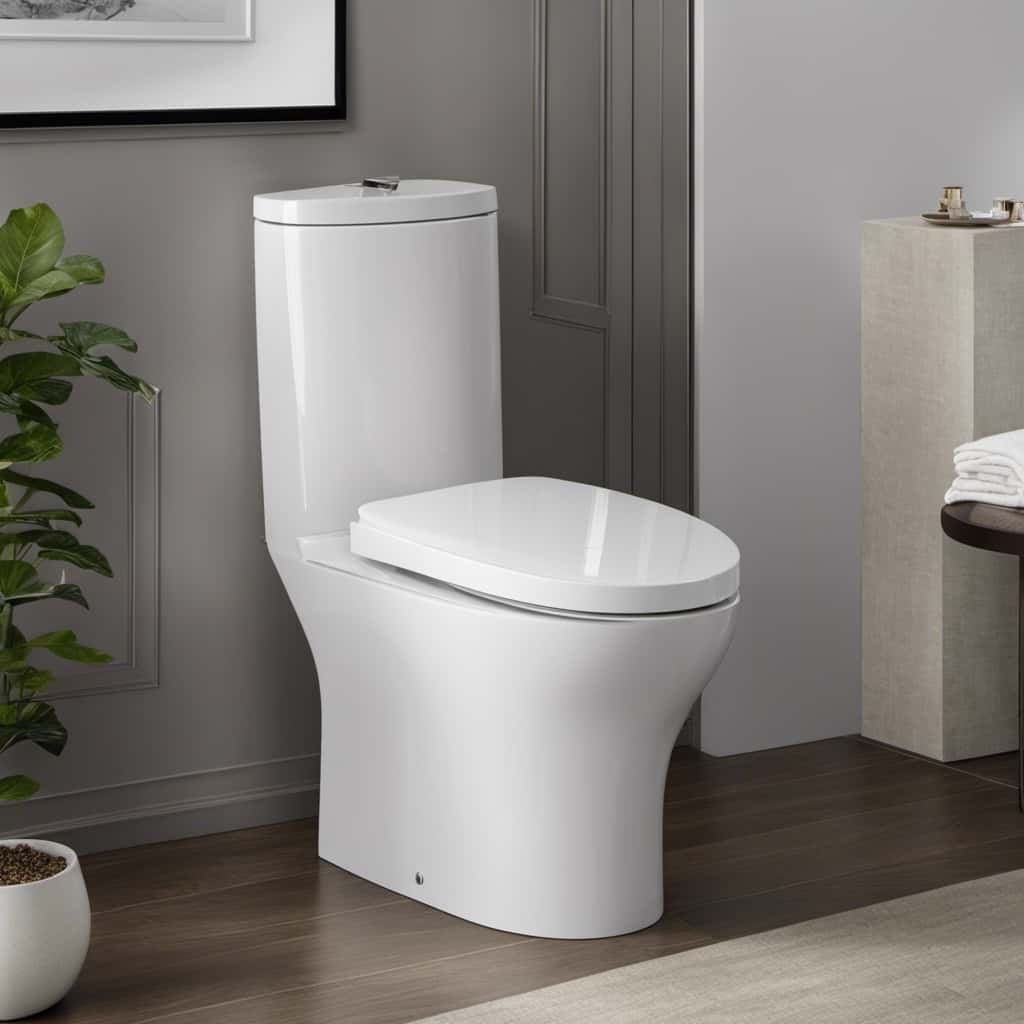As a plumbing enthusiast, I’ve always found toilets to be fascinating beasts. But when my own toilet started making a deafening roar after every flush, I knew something was amiss.
Curiosity led me down a rabbit hole of research, uncovering the common causes behind this unsettling noise. In this article, I will share my findings on the water pressure issue, the faulty fill valve, and the damaged flush valve.
Fear not, for I will also provide you with the knowledge and techniques to silence your unruly commode once and for all.
Key Takeaways
- Faulty fill valve can cause loud noise known as water hammer
- Damaged flush valve can also cause loud noises after flushing
- Water pressure regulation is important to prevent noisy flushing
- Inspecting and replacing faulty valves can help resolve the noise issue
Common Causes of Loud Noises After Flushing
One common cause of loud noises after you flush your toilet is a faulty fill valve. The fill valve is responsible for refilling the tank with water after a flush. If it is not functioning properly, it can cause the toilet to make loud banging or vibrating noises, commonly known as toilet water hammer. This happens when the water pressure suddenly stops, causing a shockwave that reverberates through the pipes.
Another potential cause of loud noises is toilet clog issues. When there is a blockage in the toilet drain, the water flow can become restricted, leading to increased pressure and resulting in loud gurgling or bubbling sounds.
Understanding these common causes of loud noises after flushing can help you diagnose and resolve the issue effectively.
Now, let’s move on to understanding the water pressure issue.
Understanding the Water Pressure Issue
Understanding the water pressure issue can help determine the cause of the loud noise after flushing. Water pressure regulation plays a crucial role in the proper functioning of a toilet. When the water pressure is too high, it can lead to various problems, including noisy flushing. High water pressure puts excessive strain on the fill valve, causing it to close rapidly, resulting in the loud noise. To further understand the impact of high water pressure, let’s take a look at the table below:
| Water Pressure | Impact |
|---|---|
| Too High | Noisy Flushing, Increased Wear and Tear |
| Too Low | Weak Flush, Inefficient Water Usage |
As we can see, high water pressure can not only cause noise but also lead to increased wear and tear on the toilet’s components. This emphasizes the importance of water pressure regulation in maintaining a properly functioning toilet. Now, let’s explore the next section to discover the culprit behind the noise – the faulty fill valve.
Faulty Fill Valve: The Culprit Behind the Noise
The faulty fill valve is often responsible for the loud noise that occurs after flushing. This noise, commonly known as water hammer, is caused by a sudden surge of water flow and the resulting pressure wave.
When the fill valve is not functioning properly, it can cause the water to rush into the toilet tank too quickly, creating a forceful impact against the pipes. This sudden impact creates a loud banging noise, resembling a hammer hitting the pipes.
Additionally, the faulty fill valve can also contribute to the presence of air bubbles in the water supply system. These air bubbles can further exacerbate the water hammer effect, amplifying the noise and potentially causing damage to the plumbing system.
To resolve this issue, it is advisable to replace the faulty fill valve to restore normal water flow and eliminate the loud noise after flushing.
Damaged Flush Valve: Another Reason for the Loud Sound
If your toilet is making a loud noise after flushing, it could be due to a damaged flush valve. The flush valve is responsible for controlling the water flow from the tank into the bowl during a flush. When it becomes damaged, it can cause various issues, including loud noises.
To troubleshoot and repair the damaged flush valve, follow these steps:
-
Inspect the flush valve: Look for any cracks, breaks, or misalignments in the flush valve. These issues can disrupt the flow of water and create noise.
-
Replace the flush valve: If you notice any damage, you will need to replace the flush valve. Turn off the water supply, remove the old valve, and install a new one following the manufacturer’s instructions.
-
Test the toilet: Once the new flush valve is installed, turn the water supply back on and flush the toilet. Listen for any abnormal noises. If the loud noise persists, further troubleshooting may be required.
How to Fix the Noise Issue in Your Toilet
To fix the noise issue in your toilet, start by inspecting the flush valve for any damage or misalignment. If the flush valve is damaged or not aligned properly, it can cause loud noises during flushing.
To check the flush valve, remove the tank lid and look for any cracks or signs of wear. If you notice any damage, it’s best to replace the flush valve.
Additionally, check the water supply line and ensure it is securely connected to the toilet. Loose connections can also contribute to noise during flushing.
Another solution is to install effective soundproofing solutions for loud toilets. These can include soundproofing mats or insulation to reduce noise transmission.
Frequently Asked Questions
How Long Does It Typically Take for a Toilet to Make a Loud Noise After Flushing?
It typically takes a few seconds for a toilet to make a loud noise after flushing. However, regular toilet maintenance, such as checking for loose parts and preventing clogs, can help prevent these noises from occurring.
Can Using a Different Type of Toilet Paper Cause Loud Noises After Flushing?
Using a different type of toilet paper can sometimes cause loud noises after flushing. This is because certain toilet paper alternatives may not dissolve as easily, potentially impacting the plumbing and causing vibrations that result in noise.
Is It Possible for a Faulty Flapper to Be the Cause of the Loud Noise After Flushing?
It’s possible that a faulty toilet flapper could be the cause of the loud noise after flushing. When the flapper doesn’t close properly, it can create a sudden release of water pressure, resulting in a loud noise.
Are There Any Health Risks Associated With the Loud Noise After Flushing?
There can be potential health risks associated with the loud noise after flushing. It could indicate a problem with the plumbing system, which can lead to water leaks or contamination. Regular maintenance and prompt repairs are important prevention methods.
Can a Broken Water Supply Line Cause the Loud Noise After Flushing?
Yes, a broken water supply line can indeed cause a loud noise after flushing. When the water supply line is damaged, it can create vibrations and air pockets, resulting in the noisy sound when the toilet is flushed.
Conclusion
In conclusion, understanding the common causes of loud noises after flushing can help resolve the issue in your toilet.
The water pressure problem may be the culprit behind the loud sound, while a faulty fill valve or damaged flush valve can also contribute to the noise.
By identifying and fixing these issues, you can eliminate the annoying sounds and ensure a peaceful bathroom experience.
Remember, just as a well-tuned instrument creates harmonious melodies, a well-maintained toilet operates silently, allowing you to enjoy a serene and undisturbed environment.










